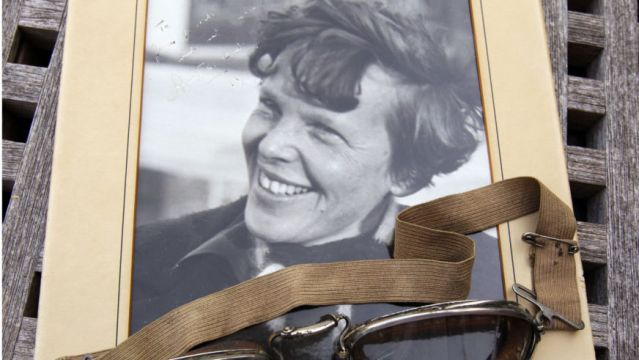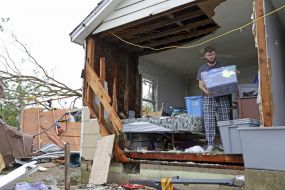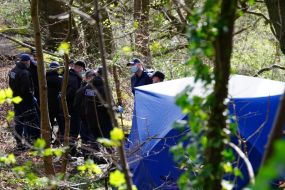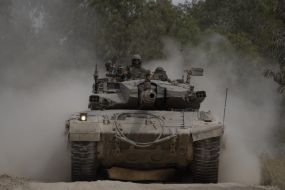A grainy sonar image recorded by a private pilot has reinvigorated interest in one of the past century’s most alluring mysteries: What happened to Amelia Earhart when her plane vanished during her flight around the world in 1937?
Numerous expeditions have turned up nothing, only confirming that swaths of ocean floor held no trace of her twin-tailed monoplane.
Tony Romeo believes his new South Carolina-based sea exploration company has captured an outline of the iconic American’s Lockheed 10-E Electra.
Archaeologists and explorers are hopeful. But whether the tousled-haired pilot’s plane lies at the roughly 16,000-foot (4,800-metre) depth remains to be seen. And debates abound about the proper handling of whatever object is discovered.
Archivists are hopeful that Mr Romeo’s Deep Sea Vision is close to solving the puzzle — if for no other reason than to return attention to Ms Earhart’s accomplishments.
Regardless, the search is on for the first woman to fly across the Atlantic Ocean.
Mr Romeo wanted more of an adventure than his commercial real estate career. His father flew for Pan American Airlines, his brother is an air force pilot and he has a private pilot’s license himself.
Hailing from an “aviation family”, he has long held an interest in the Earhart mystery.
Mr Romeo said he sold his real estate interests to fund last year’s search and buy a $9 million underwater drone from a Norwegian company.
The state-of-the-art technology is called the Hugin 6000 — a reference to its ability to break into the deepest layer of the ocean at 6,000 metres (19,700 feet).
A 16-person crew began a roughly 100-day search in September 2023, scanning more than 5,200 square miles of seafloor. They narrowed their probe to the area around Howland Island, a mid-Pacific atoll between Papua New Guinea and Hawaii.
But it was not until the team reviewed sonar data in December that they saw the fuzzy yellow outline of what resembles a plane.
“In the end, we came out with an image of a target that we believe very strongly is Amelia’s aircraft,” Mr Romeo said.
The next step is taking a camera underwater to better examine the unidentified object. If the visuals confirm the explorers’ greatest hopes, Mr Romeo said the goal will be to raise the long-lost Electra.
Ultimately, Mr Romeo said his team undertook the costly adventure to “solve aviation’s greatest unsolved mystery”. An open hatch could indicate that Earhart and her flight companion escaped after the initial impact, Mr Romeo said, and a cockpit dial could lend insight into what exactly went wrong.
Earhart and her navigator, Fred Noonan, disappeared while flying from New Guinea to Howland Island as part of her attempt to become the first female pilot to circumnavigate the globe.
She had radioed that she was running low on fuel.
The navy searched but found no trace. The US government’s official position has been that Ms Earhart and Mr Noonan went down with their plane.
Since then, theories have veered into the absurd, including abduction by aliens, or Ms Earhart living in New Jersey under an alias. Others speculate that she and Mr Noonan were executed by the Japanese or died as castaways on an island.
“Amelia is America’s favourite missing person,” Mr Romeo said.
Maritime archaeologist James Delgado said Mr Romeo’s potential find would change the narrative but “we need to see more”.
“Let’s drop some cameras down there and take a look,” said Mr Delgado, senior vice president of the archaeological firm Search.
Mr Delgado said Mr Romeo’s expedition employed world-class, cutting-edge technology that was once classified and is “revolutionising our understanding of the deep ocean”.
But he said Mr Romeo’s team must provide “a forensic level of documentation” to prove it is Ms Earhart’s Lockheed. That could mean the patterns in the fuselage’s aluminium, the configuration of its tail and details from the cockpit.
David Jourdan said his exploration company Nauticos searched in vain on three separate expeditions between 2002 and 2017, surveying an area of seafloor about the size of Connecticut.
He would have expected to see straight wings and not swept wings, like the new sonar suggests, as well as engines. But that could be explained by damage to the aircraft or reflections distorting the image, he acknowledged.
“It could be a plane. It certainly looks like a plane. It could be a geological feature that looks like a plane,” he said.
Dorothy Cochrane, an aeronautics curator at the National Air and Space Museum, said Mr Romeo’s crew searched in the right place near Howland Island. That is where Ms Earhart desperately sought a runway when she disappeared on the last leg of her flight.
If the object really is the historic aircraft, the question for Ms Cochrane will be whether it is safe to raise. How much of the machinery is still intact would be determined in part by how smoothly Ms Earhart landed, she added.
“That’s where you have to really look at this image and say, ‘What have we got here?’” said Ms Cochrane.
If the fuzzy sonar images turn out to be the plane, international standards for underwater archaeology would strongly suggest the aircraft remain where it is, said Ole Varmer, a retired lawyer with the National Oceanic and Atmospheric Administration and a senior fellow at The Ocean Foundation.
Nonintrusive research can still be conducted to reveal why the plane possibly crashed, Mr Varmer said.
“You preserve as much of the story as you can,” Mr Varmer said.
“It’s not just the wreck. It’s where it is and its context on the seabed. That is part of the story as to how and why it got there. When you salvage it, you’re destroying part of the site, which can provide information.”
Raising the plane and placing it in a museum would likely cost hundreds of millions of dollars, Mr Varmer said. And while Mr Romeo could conceivably make a salvage claim in the courts, the plane’s owner has the right to deny it.
Ms Earhart bought the Lockheed with money raised, at least in part, by the Purdue Research Foundation, according to a blog post by Purdue University in Indiana. And she planned to return the aircraft to the school.
Mr Romeo said the team believes the plane belongs in the Smithsonian. Acknowledging the “uncharted territory” of potential legal issues, he said his exploration company will “deal with those as they come up”.







